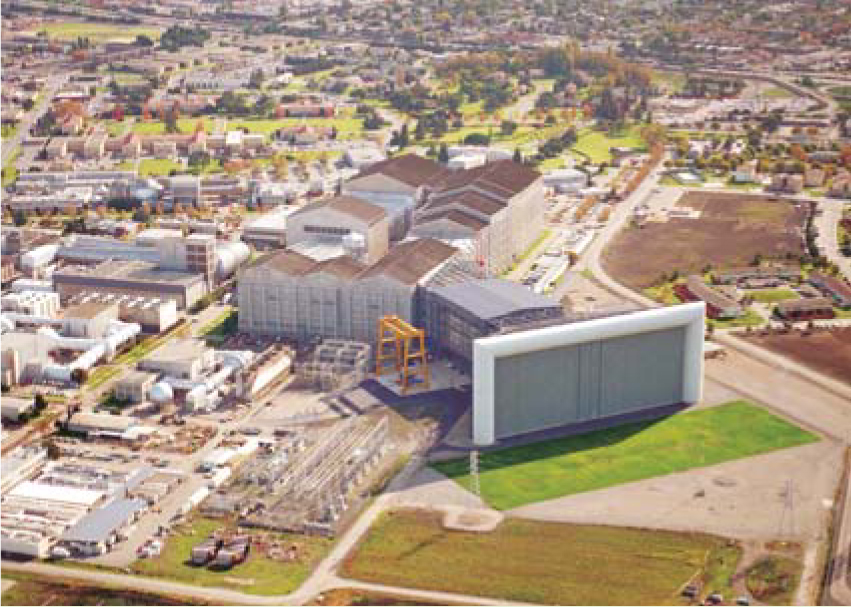LLNL, industry team boost truck fuel efficiency
DOI: 10.1063/1.3265230
Lawrence Livermore National Laboratory and a major US truck manufacturer are expected to make public in January results of a collaborative research project showing that fuel consumption in 18-wheel trucks can be cut by one-fifth or more through streamlining.
George Miller, LLNL director, said the lab brought its expertise in computational fluid dynamics and its considerable supercomputing assets to bear in improving the aerodynamic profile of big trucks. The simulations have been tested on a full-scale mockup of a tractor-trailer in a wind tunnel, he said, adding, “We know it will work.”
Miller spoke at a conference in Washington, DC, in September sponsored by the Council on Competitiveness. Lab spokesman James Bono said the 20% fuel-efficiency improvement was “a conservative estimate,” but he declined to provide details. He said the results would be announced this month at the National Full-Scale Aerodynamics Complex, the world’s largest windtunnel facility, located at NASA’s Ames Research Center in Silicon Valley. But a lab spokesperson later said the announcement had been delayed until January.
According to a progress report presented by LLNL principal investigator Kambiz Salari this past May, the lab is collaborating with truck manufacturer Navistar Inc, tiremaker Michelin Americas Research and Development Corp, and Freight Wing Inc, a supplier of aerodynamic drag-reducing fairings for 18-wheelers. Fairings, the smoothly shaped structures often seen on the fronts of motorcycles, act to deflect airflow around components that cause drag. A truck’s boxlike configuration maximizes cargo space, but it is far from aerodynamically efficient. A truck’s front end creates 66% of the total drag, according to the LLNL report, while the trailer axle and wheels contribute 18% and the trailer body 16%. Using its computational fluid dynamics modeling capabilities, the lab has developed improved designs for trailer underbody and wheel fairings, trailer skirts, and “boat-tail” rear plates, structures that reduce drag from low pressure at the rear of the trailer.
The fuel-economy improvements attained in the collaboration appear to surpass what the partners had first thought possible. Their goal, according to Salari, was to reduce by 25% the drag encountered by trucks at 65 miles per hour in order to achieve a fuel-efficiency gain of 10% to 15%. If that target were achieved and the improvements adopted by the entire US 18-wheeler fleet, the country’s petroleum consumption could be reduced by the equivalent of 130 midsize tanker ships per year, according to the US Department of Energy.
A total of $3.4 million has been spent on the project, including $300 000 during fiscal year 2009. The partnership envisions bringing fairings and other products, such as wide trailer tires, to the marketplace in about two years.
Eighteen-wheelers, known in the industry as class 8 trucks, consume about 12% of the petroleum used in the US, according to the Salari paper. Up to two-thirds of the diesel fuel that is consumed by such trucks at highway speeds is to counter air resistance, according to Kenworth Truck Co. Most of the drag is caused by the difference in air pressure produced by the truck as it travels at highway speeds.
Many trucks are already equipped with fairings on their cab roofs to help smooth airflow around the front of the trailer. But the use of fairings at other locations has been limited because they interfere with loading and unloading and reduce ground clearance. Devices that cover the gap between cab and trailer also improve aerodynamics.
The research collaboration has been sponsored by the US Department of Energy’s FreedomCAR and vehicle technologies programs.

Improvements in truck aerodynamics modeled at Lawrence Livermore National Laboratory were tested at the National Full-Scale Aerodynamics Complex at NASA’s Ames Research Center, above.
NASA

More about the Authors
David Kramer. dkramer@aip.org




